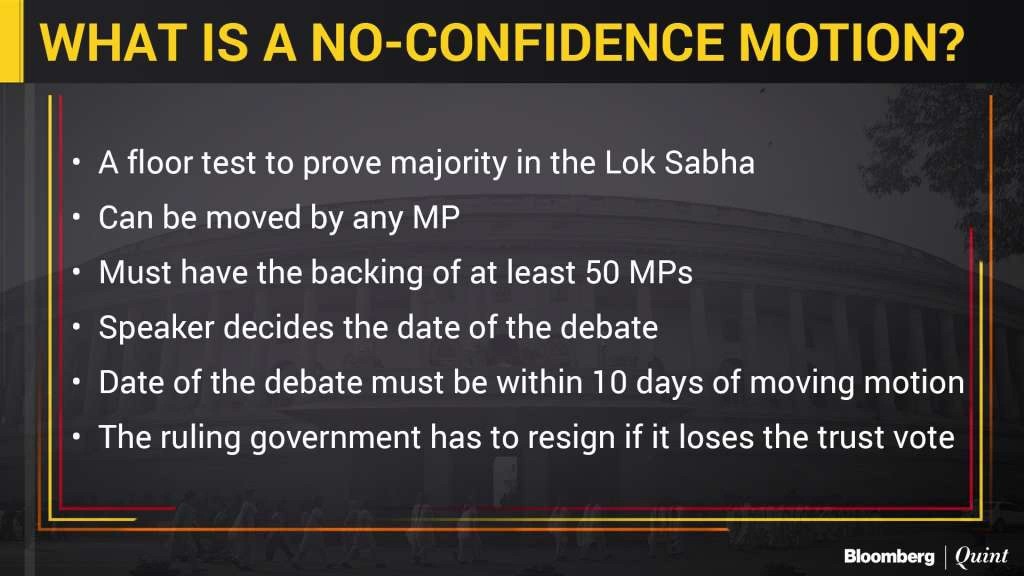-
In a parliamentary democracy, government can be in power only if it commands majority in directly elected House.
-
Article 75(3) of our Constitution of India embodies this rule by specifying that Council of Ministers is collectively responsible to Lok Sabha.
-
But there is no mention of a no-confidence motion in the constitution.
-
The Rule 198 of Rules of Procedure and Conduct of Business of Lok Sabha provides mechanism for testing this collective responsibility.
-
Rajya Sabha does not have procedure for moving of no-confidence motion against Government and also adjournment motion, censure motion.
-
The rule allows any Lok Sabha MP who can garner support of 50 colleagues, to introduce motion of no-confidence against the Council of Ministers.
-
Motion of No-confidence need not set out any grounds on which it is based.
-
If there are 50 MPs in favour, the motion is admitted and speaker allots date for discussion on the motion. Thereafter, discussion on motion takes place.
-
MPs who support motion highlight government’s shortcomings.
-
Then Prime Minister or ministers reply to the charges made.
-
If the government loses trust vote, it is expected to resign.
